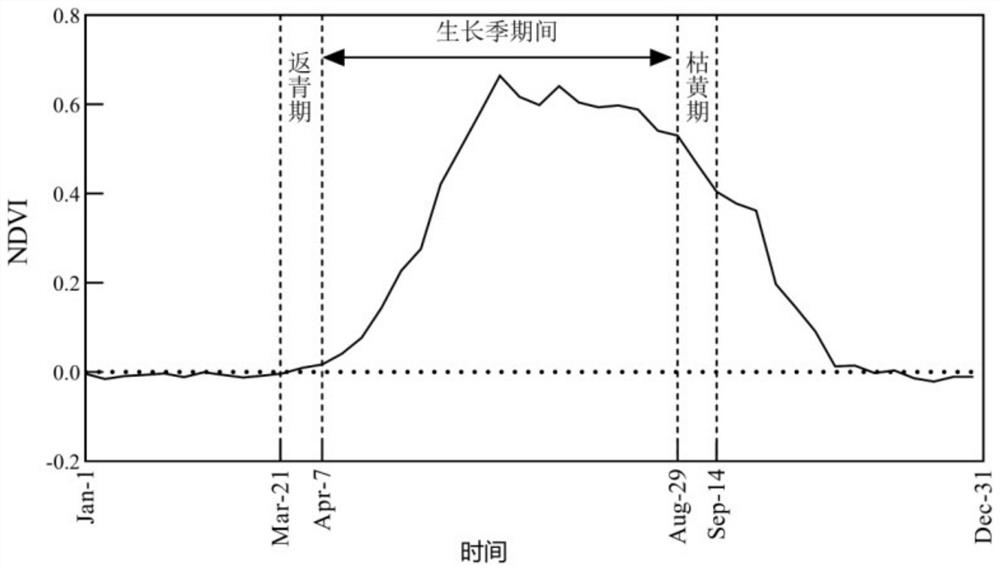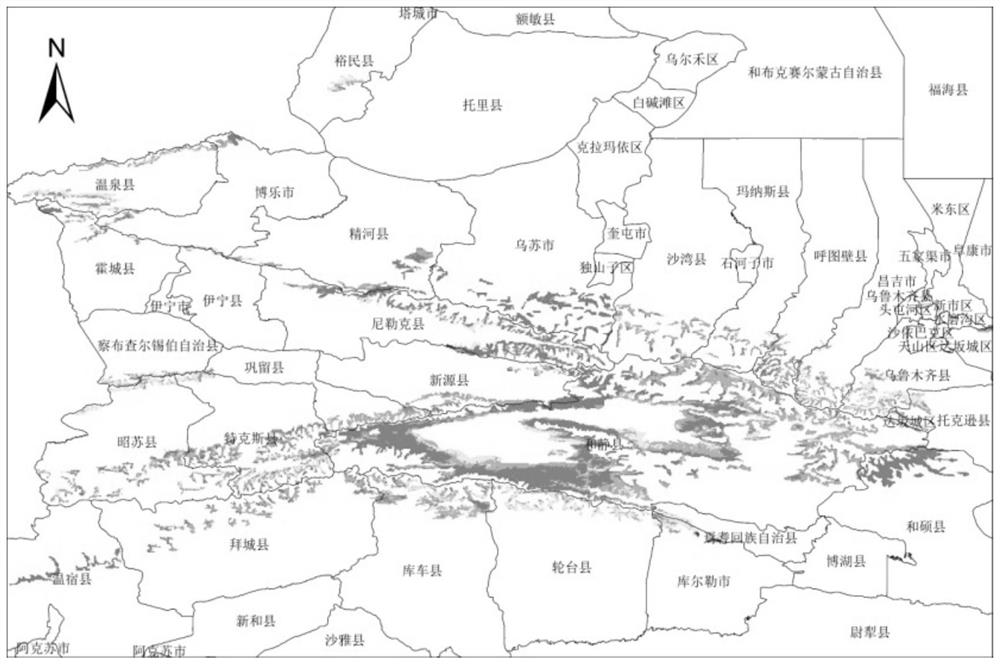Remote sensing method for quantifying the grazing intensity of alpine meadow
A meadow and alpine technology, which is applied in the field of remote sensing to quantify the grazing intensity of alpine meadows, can solve the problems of inability to accurately quantify the grazing intensity of large-scale grasslands, and achieve the effect of accurate quantification
- Summary
- Abstract
- Description
- Claims
- Application Information
AI Technical Summary
Problems solved by technology
Method used
Image
Examples
Embodiment Construction
[0022] The specific implementation method of the present invention will be further described below through an application case of quantifying the grazing intensity of alpine meadow.
[0023] Implementation of a remote sensing method to quantify grazing intensity in alpine meadows proceeds as follows:
[0024] Step 1. Obtain the MOD13Q1 data of the study year in the study area
[0025] Download MODIS terrestrial product MOD13Q1 data in the study area in 2011, use MRT (MODIS ReprojectionTool) software to convert MOD13Q1 data format and map projection, convert HDF format to TIFF format, and convert sinusoidal map projection to GCS_WGS_1984 map projection;
[0026] Step 2. Extract the grassland coverage map of the study year in the study area
[0027] According to the above step 1, the transformed MOD13Q1 data was cut using the clipping function of ArcGIS software to cut the alpine meadow distribution vector map and the Tiff image map of MODIS13Q1, and extract the alpine meadow gras
PUM
 Login to view more
Login to view more Abstract
Description
Claims
Application Information
 Login to view more
Login to view more - R&D Engineer
- R&D Manager
- IP Professional
- Industry Leading Data Capabilities
- Powerful AI technology
- Patent DNA Extraction
Browse by: Latest US Patents, China's latest patents, Technical Efficacy Thesaurus, Application Domain, Technology Topic.
© 2024 PatSnap. All rights reserved.Legal|Privacy policy|Modern Slavery Act Transparency Statement|Sitemap


